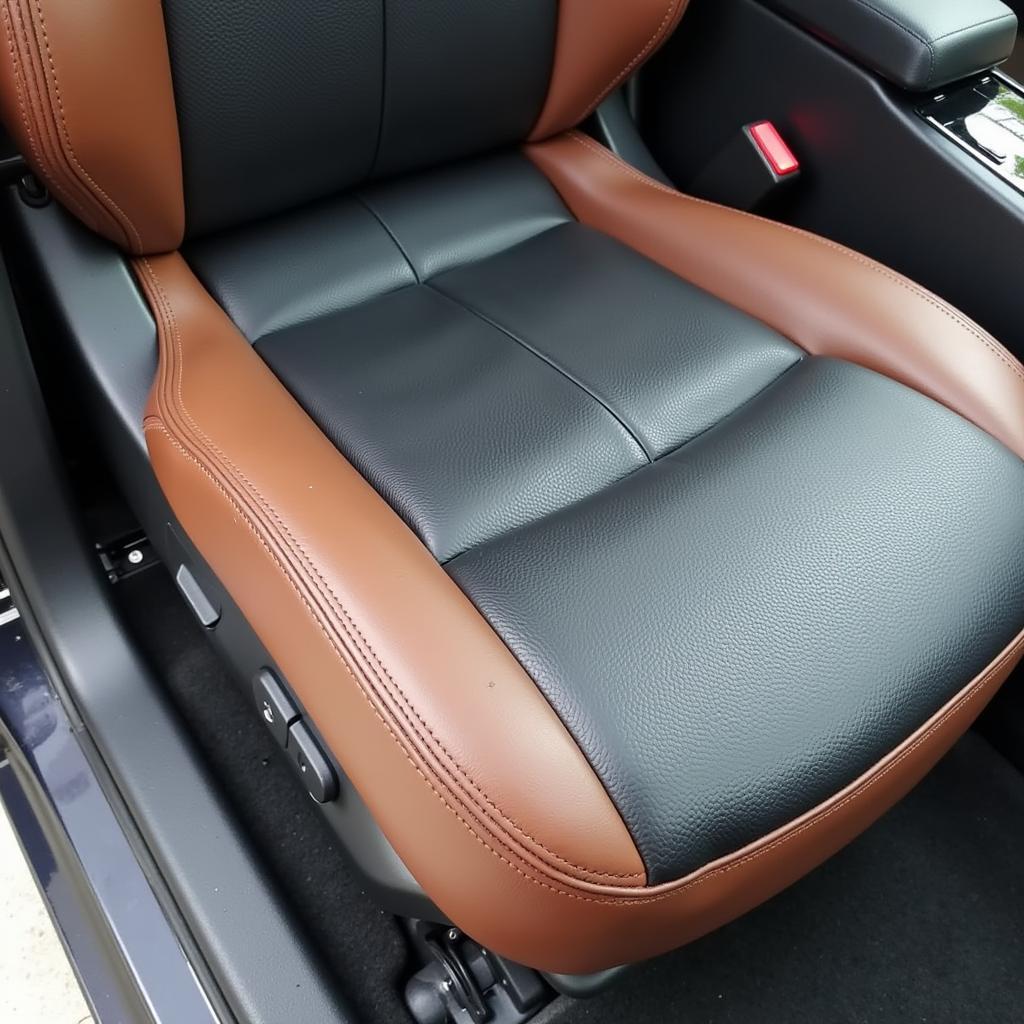A small rip in your leather car seat can quickly become a major eyesore. Fortunately, fixing a small rip in leather car seat is often possible without professional help. This guide provides step-by-step instructions and expert advice to help you restore your car’s interior. how to fix a tear in cloth car seat addresses cloth seat repairs.
Leather car seats add a touch of luxury and comfort to any vehicle. However, they are susceptible to wear and tear, especially small rips and tears. Ignoring these minor damages can lead to bigger problems down the road, affecting the overall appearance and resale value of your car. Whether you’re a car enthusiast, a DIYer, or a professional mechanic, understanding how to fix a small rip in leather car seat is an essential skill. This article will equip you with the knowledge and techniques you need to tackle this common issue effectively.
Understanding Leather Damage
Types of Leather Damage
Before diving into the repair process, it’s important to assess the type of damage. Is it a small tear, a scratch, or a deep gash? Each type requires a slightly different approach. Small rips are generally repairable using DIY methods, while larger tears might require professional intervention.
Assessing the Severity
Determine how deep the rip is. A surface scratch can often be buffed out, whereas a deep tear that penetrates through the leather will require patching. The size of the rip also matters. can you fix a rip in leather car seat provides further details on different repair options.
Gathering Your Supplies
Essential Tools and Materials
To fix a small rip in your leather car seat, you’ll need a few essential supplies: a leather repair kit (containing leather filler, adhesive, and color-matching pigment), a cleaning solution, rubbing alcohol, a microfiber cloth, a small spatula or palette knife, and sandpaper (fine grit).
Choosing the Right Leather Repair Kit
Selecting the right leather repair kit is crucial for achieving a seamless repair. Ensure the kit includes a color-matching pigment that closely resembles your car seat’s leather color. Testing the pigment on a hidden area of the seat is recommended.
Step-by-Step Repair Guide
Cleaning the Area
Thoroughly clean the ripped area and the surrounding leather with a suitable leather cleaner. This removes dirt and grime, ensuring proper adhesion of the repair materials. Then, wipe the area with rubbing alcohol to further degrease the surface.
Applying the Leather Filler
If the rip is deep, use a leather filler to fill the gap. Apply the filler with a spatula or palette knife, ensuring a smooth and even surface. Let the filler dry completely according to the manufacturer’s instructions. fixing ripped leather car seat offers a more comprehensive guide on this process.
Applying the Adhesive
Once the filler is dry, apply a thin layer of leather adhesive to the edges of the rip. Carefully align the torn edges and press them together firmly. Hold the edges together for a few minutes to allow the adhesive to bond.
Applying the Colorant
After the adhesive has dried, apply the colorant to the repaired area using a small brush or sponge. Apply thin coats, allowing each coat to dry before applying the next. This helps achieve a more even color match.
Maintaining Your Leather Car Seats
Regular Cleaning and Conditioning
Regular cleaning and conditioning are essential for preventing future rips and tears. Use a leather conditioner to keep the leather supple and moisturized. This prevents drying and cracking, which can lead to rips.
Protective Measures
Consider using seat covers or protective sprays to shield your leather seats from UV rays, spills, and other potential damage. These preventative measures can significantly extend the life of your leather car seats. how much to fix upholstery in car can give you an idea of professional repair costs.
Expert Insights
Johnathan Davis, a seasoned automotive upholstery specialist, emphasizes the importance of preventative care: “Regularly cleaning and conditioning your leather seats is the best way to prevent rips and tears. A little maintenance goes a long way in preserving the beauty and longevity of your car’s interior.”
Another expert, Sarah Miller, a leather repair technician with over 15 years of experience, adds, “When repairing a small rip, patience is key. Allow ample drying time for each step of the process to ensure a strong and lasting repair.”
 Finished Leather Car Seat Repair
Finished Leather Car Seat Repair
Conclusion
Fixing a small rip in your leather car seat is a manageable DIY project that can save you money and restore your car’s interior. By following the steps outlined in this guide and using the right materials, you can achieve a professional-looking repair. Remember, regular maintenance is key to preventing future damage and keeping your leather seats in pristine condition. For further assistance or for more complex repairs, feel free to connect with us at AutoTipPro. Contact us at +1 (641) 206-8880 or visit our office at 500 N St Mary’s St, San Antonio, TX 78205, United States. fixing major damage on car offers advice on handling more serious car damage.




Leave a Reply